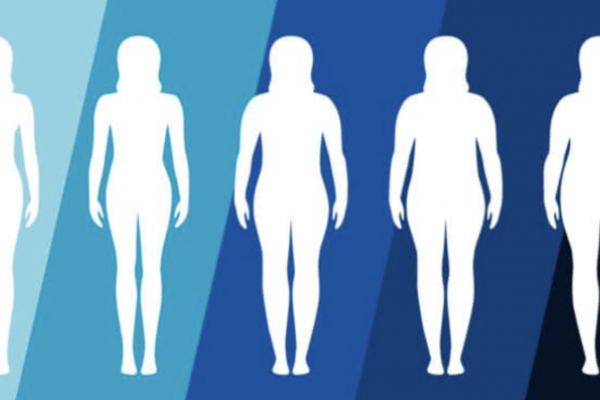The Wide World of Possibility in Sports Analytics
As we saw in the 2022 FIFA World Cup, teams and fans experienced a new way of determining whether a goal was made thanks to semi-automated technology like VAR (video assistance referee) that tracks ball and player movement on the field.
It is the latest example of the burgeoning field of sports analytics and technologies, which can apply advances in data science to nearly every aspect of athletics and athletic performance. And, it’s well beyond the simple win-lose prediction we saw in “Moneyball” – Michael Lewis’s 2003 book and 2011 film depicting how the Oakland Athletics used data to find undervalued baseball talent. Data – enabled by machine learning, wearable technology, and computer vision – can now tell us more about when and how athletes could get injured, can analyze competition for rules violations in real time, as FIFA is doing, and how different athletes perform in different settings and combinations.
In a recent UVA Data Points podcast episode, Senior Associate Dean for Research and Quantitative Foundation Distinguished Professor Don Brown moderated a discussion between Assistant Professor Natalie Kupperman and Associate Professor Steve Baek about the evolution of sports analytics. Kupperman, who started her career as an athletic trainer before completing her Ph.D., focuses on using data science to reduce injury risk. Baek is interested in geometry and using computer vision to model how different shapes – such as the complex shapes that make up the human body – move.

“In the ‘70s and ‘80s, we started to collect more data on our athletes, stats have gotten better, stats started to become more publicly available, which is where Moneyball came from,” Kupperman said. “Since then, we’ve gotten even more technology, including sensor technology. We store our data better. We have next gen stats. So, where I think things are really going now is not just how do we make the stats better, and the game outcomes better, we're now looking at individual athletes, and how do we make them healthier and better performers on the field, whether they're in high school, college, or professional level.”
On-field cameras now capture most professional games from a variety of angles, enabling analysts to track individual players’ movements across the field, Baek explained. Instead of analysts having to manually mark players, computers can automatically detect those players on the field to the individual joint level in each video frame, collecting a continuous stream of information about how an athlete is moving.
“From there, we can generate a huge quantity of motion data of the players during the game or during practice. All of this creates this very exciting opportunity as of today, where you can collect all this data and then distill some interesting knowledge about how athletes perform and get injured,” Baek said. That data could even be paired with data from health sensors that athletes wear monitoring heart rate, stress, sleep and more. At UVA, Kupperman said, researchers are already starting to look at how data from Ōura rings, which measure a variety of health indicators, could be used in sports.
Kupperman said such data can “revolutionize” how medical providers and researchers alike look at sports injuries. They could come to understand how a player moves throughout a whole game and throughout their day, when and how injuries happen most frequently, how they could be avoided, and any movements or signs that might indicate a potential overuse injury, such as a tendon injury or stress fracture. Though some injury risk will always be present in sports, such information could give medical providers and teams an important tool for mitigating injury risk as much as possible.
“I don’t think I can emphasize enough to people that this is a huge deal in our world,” Kupperman said.
The trio also touched on some of the privacy concerns that come with such large troves of data. At the professional level, Kupperman said, collective bargaining agreements largely protect athletes’ individual data. However, athletes without that layer of contractual protection could be vulnerable to teams, for example, letting someone go based on a perceived potential for injury indicated by artificial intelligence algorithms.
“I am concerned about AI being used in a decision-making process that is not totally fair to the players,” Baek said, pointing out another film, “Minority Report,” in which an artificial intelligence algorithm aims to predict which individuals are most likely to commit crimes but ends up mired in racial bias and ethical concerns.
“AI algorithms are never perfect. They are not 100% accurate, but there is this biased perception of data science that, if all of this AI technology says X, then it must be true. I think that we as a data science community will need to talk about, for example, how this injury prediction data is used,” Baek said. “It poses a very interesting ethical dilemma that I think the data science community has to tackle.”
Another challenge, the researchers said, is combining data from on-field cameras, health sensors and other sources into a useable form that can be more easily analyzed by researchers, sports scientists, and team medical and performance staff.
“Machine learning models and data science algorithms are getting more and more accurate. But on the flip side, they're becoming more and more sophisticated to analyze,” Baek said.
Getting all of that data to work together seamlessly, from how it is produced and stored to how it is reported, is the next key to success.
“This is more of a design problem of putting all our data in and making it work really well together, and at scale, so we can continually add that data in quickly and then be able to seamlessly put it out into reports, dashboards, or fan engagement platforms,” Kupperman said. “That probably the thing I think about the most right now.”
If successful, those data platforms could have implications well beyond sports. Asked to name some fields their work could expand into, Kupperman highlighted physical therapy and rehabilitation, which also focuses heavily on the dynamics of human motion and how to prevent injury or maximize health.
Baek also mentioned military training, as the military works to maximize soldiers’ potential and minimize the potential for injury, and manufacturing, as companies hope to limit repetitive use injuries among their workers.
“I think I can see this all this high technology kind of becoming more democratized,” Baek concluded. “Then a broader group of people can start to benefit from these technologies, which is pretty exciting.”




